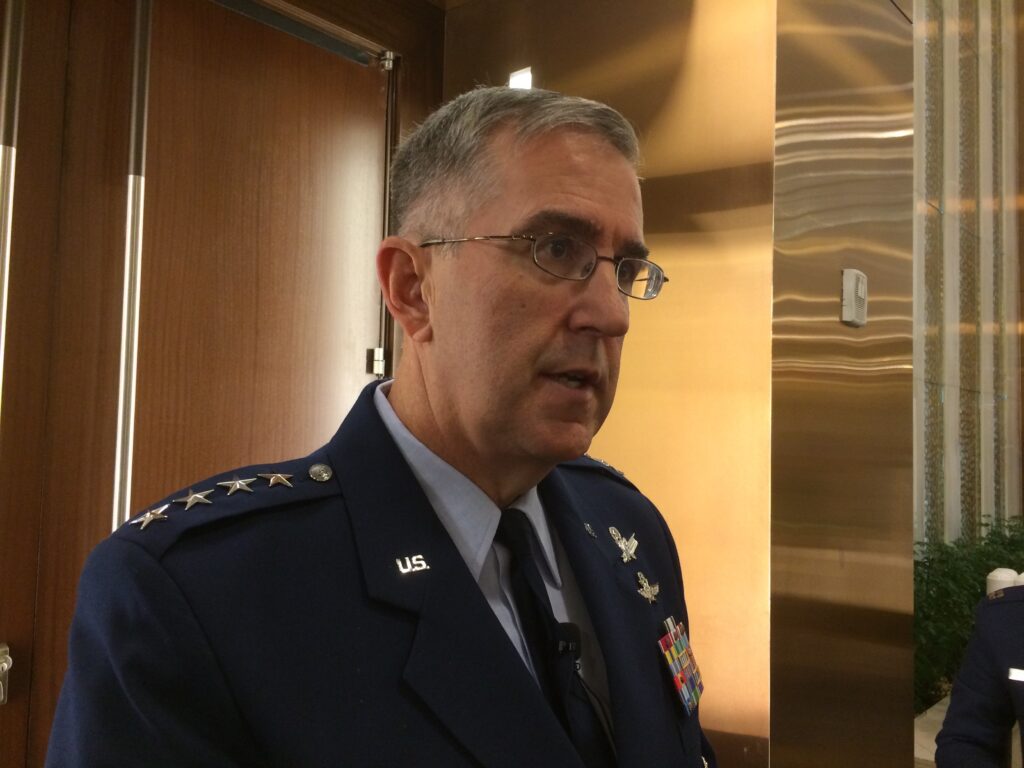Intel Community Key To JICSPOC; 3rd Test Next Week: Gen. Hyten
Posted on
AFA WINTER: The third experiment in how the Intelligence Community and the Pentagon should fight together in space gets underway next week, says Gen. John Hyten, head of Space Command, A fourth will be held in May.
After the first two tests — all details of which are classified — one lesson has become absolutely clear, Hyten made clear to reporters last night. The Intelligence Community is the key to the fight because of the indications and warnings it provides. Hyten would not discuss what kinds of indications and warnings are proving key, nor would he tell me how the IC and the military are sharing information as it flows in.
But one thing he and other senior military officials have made clear is that the JICSPOC (Joint Interagency Combined Space Operations Center) is one of the most important experiments underway in the US military.
It may be hard to believe but it is due to get a tiny $15 million in the fiscal 2017 defense budget. The effort got underway way last year after the National Reconnaissance Office (NRO) fought it for a year and finally yielded. We don’t know how much the NRO may be chipping in to get the JICSPOC going as an initial operating concern — which it should soon be — because the NRO hardly ever says anything to the public under Director Betty Sapp.
Hyten told me that the NRO, though key to the JICSPOC, was not alone in providing indications and warnings and that the rest of the IC (NGA, NSA etc) played a prominent role in its operations. As a reminder, Strategic Command actually runs war in space for the US military and Adm. Cecil Haney is the military commander overseeing the Pentagon’s side of the JICSPOC experiments.
Hyten also said that the JICSPOC will be funded in future years though he did not disclose how much it might get.
The $14.8 million will be spent “on advanced experimentation with DoD and IC experts,” moving JICSPOC from a temporary Secure Compartmentalized Information Facility (SCIF) “into a larger, more permanent workspace,” expanding operations to around the clock, and they will pay for prototypes of “new C2 systems that improve unity of effort between the DoD and IC,” according to an Air Force budget statement by Capt. Annemarie Annicelli. The budget for JICSPOC is actually going down, at least on the Air Force side, from the $16 million stuffed in the budget for fiscal 16.
You may wonder how such a tiny sum might have such an important effect on the United States. There are two main reasons. First, no less than a figure than Deputy Defense Secretary Bob Work told us this is “the first operational and organizational construct of the Third Offset Strategy.” Since the offset is the bet America is placing to help guarantee it its global supremacy that makes it a big deal.
The nitty gritty is that war games have demonstrated holes in the ability of the United States to manage its space assets in the event of war. The problem is that our spy satellites, built and operated by the NRO, are a likely target of an enemy in the early stages of a conflict. The same goes for some of our military satellites. Today, the intelligence systems and the military systems and leaders don’t have established or clear command responsibilities. So the JICSPOC has been created to both delve deeper into just how war would play out in space and how commanders and Intelligence Community leaders should work together to best effect.
All of that is extremely complicated as operators often aren’t sure what is happening to a satellite. It could be a laser dazzling. It could be a solar flare. It could be a strike from space junk or a small meteorite. Or it could be a satellite that has been deliberately moved to hit you. It could be deliberate jamming or… You get the idea.
Subscribe to our newsletter
Promotions, new products and sales. Directly to your inbox.


